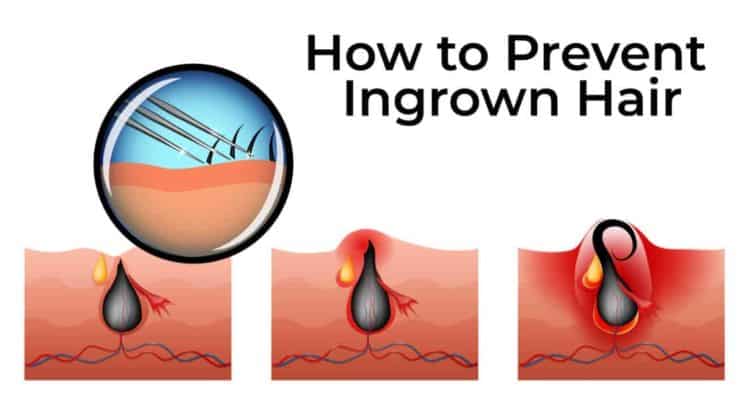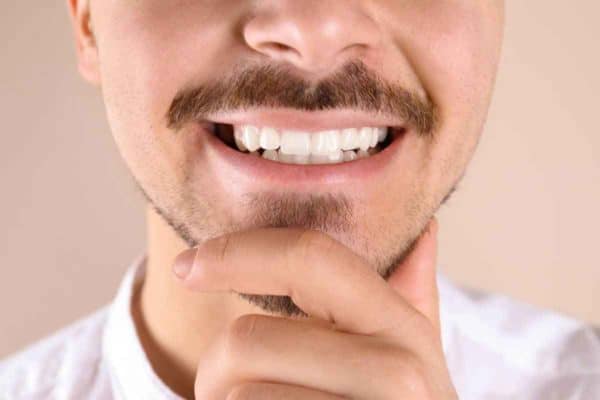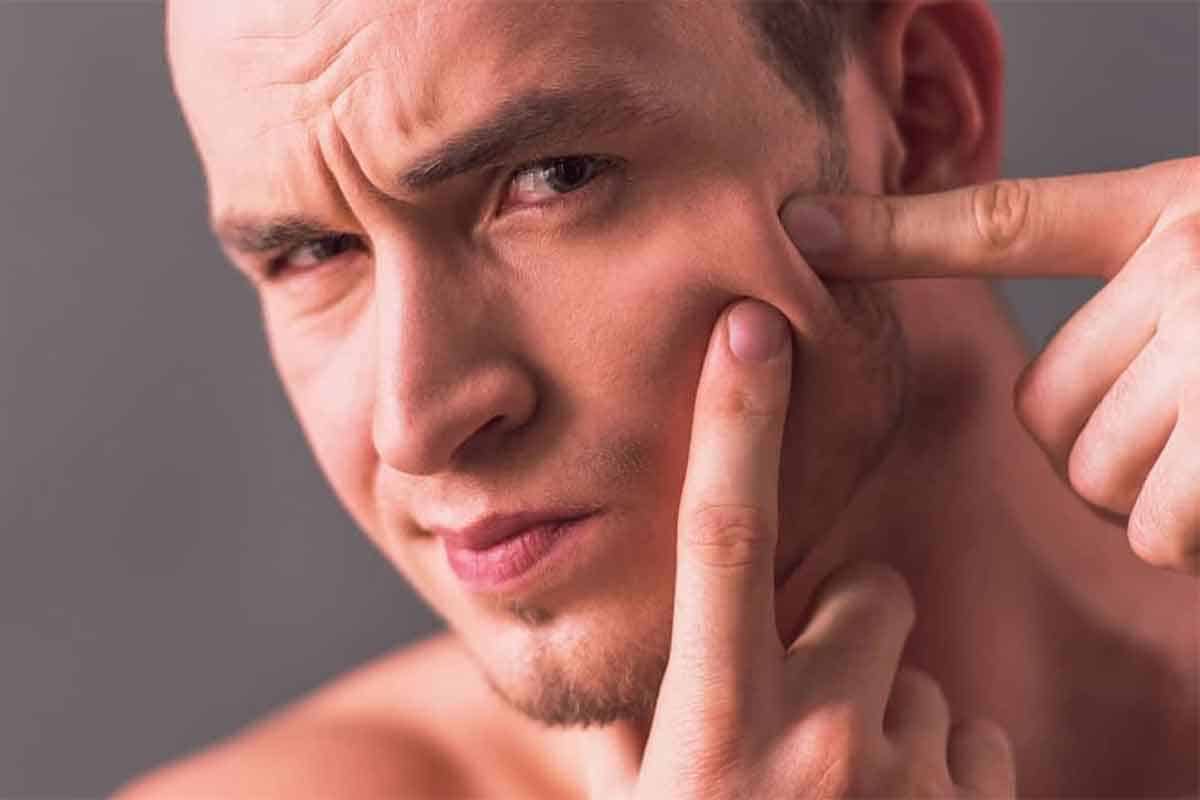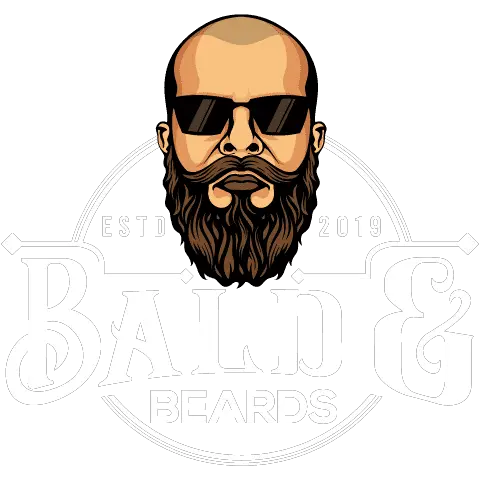Have you noticed large red bumps on your face that don’t go away? These aren’t regular pimples caused by acne. Instead, it’s most likely ingrown facial hair, and it’s easily preventable with better beard care.
Ingrown facial hairs are blocked hair follicles that are generally red, itchy, and painful. These bumps often look like larger cysts and are caused by hairs that curl under the skin, growing the wrong way.
Have you been experiencing clogged hair follicles? Learn the causes of these blocked hair follicles and how to prevent ingrown hairs on your face. Our guide also includes ways to treat and remove ingrown facial hairs.
What Causes Ingrown Hair?
- Cutting too close to the skin (follicular opening).
- Irregular shaving techniques.
- Waxing or sensitivity to hair remover products.
- Dead skin debris blocking a hair follicle.
- Close shaves, producing red razor bumps.
- Hair that grows sideways.
How to Get of Rid Ingrown Facial Hair
With active facial hair growth, you may have noticed occasionally a red bump around your beard, mustache, neck or cheeks. One of the first signs you have an ingrown hair is an itchy beard and feeling a bump under a follicle. The bump will then become swollen and go from pink to red. It may or may not have a white head.

If you look closely at the bump, you might see the strand of hair blocked inside. However, these often occur under thick skin and require a few days of waiting time to see a pustule or papule at the top.
Most ingrown hairs heal on their own after a few days. However, other ingrown hairs may need to be removed, especially if it turns into an ingrown hair cyst.
For those who already have an ingrown hair, here’s how to get rid of one below. See more tips on prevention and causes in the next section.
1. Apply a Warm Compress
Ingrown hairs typically don’t surface at first, but you may notice a large bump, swelling, or itchiness.
One of the first steps to getting rid of ingrown hairs is to use a wet warm cloth and hold on to the area with bumps. This should coax out the hair and reduce swelling around the area. The compress will also help with razor burn if you’re shaved too closely.
For those who get ingrown facial hairs around their mustache and beard areas, you can also apply beard oil to keep hair and skin pores healthy.
2. Use Tweezers to Pull Out Hair
If you can see the trapped hair underneath the pustule, you may use a tweezer to pull out the hair. It’s important to do this gently. Once you pull out the hair, you’ll likely have a small opening or wound. There may be a whitehead and pus that escapes the bump.
Do you have an ingrown hair cyst? These are much larger and more stubborn to remove. We address removing these larger cysts in the FAQs below.
3. Wash and Exfoliate
Next, you should exfoliate the area. In a circular motion, use a warm washcloth with a gentle facial soap to clean and remove dead skin cells.
- See our guide – How to Exfoliate your Beard: 4 Quick and Easy Steps
- Exfoliate before or after shaving? Learn the right way.
This helps the opening heal without scarring. You don’t need to rub the area too hard or remove any other hairs to diminish the redness and appearance of the ingrown hair either.
Experts also recommend exfoliating with salicylic or glycolic acid. See our Top Exfoliator Scrubs. You can apply these with a cotton swab or Q-Tip. You may also invest in a good beard wash.
4. Over-the-counter Treatments
- Does the hair not show because the skin is too thick?
- Still seeing redness and swelling?
Try AmLactin Cream
Check out a lactic acid cream like AmLactin, which is an over-the-counter treatment you can purchase online. A few Amazon users reported with just a small amount applied to the area, their ingrown hairs diminished within 24 hours.
Apply a Retinoid Cream
Another method to heal ingrown hair includes retinoid creams. These work best if you consistently get ingrown hairs.
Retinoid creams include tretinoin, such as Renova. These can also clear up scarring and dark skin areas. However, these must be prescribed by a dermatologist.
5. Change the Way You Shave
The most common way to develop ingrown hairs is improper shaving. You may need to switch to a single-blade sharp razor. These cause less friction on your skin and follicles. In addition, it’s best to shave in the same direction your facial hair grows.
Avoid shaving too often. Then before shaving, use warm water to soften your skin and apply shaving cream or shaving soap. If using an electric razor, hold it slightly above your skin so it doesn’t irritate your skin and pores.
Once done shaving, remember to apply aftershave or press a cool washcloth to the skin to reduce any agitation.
Check out our new guide: Prevent Pimples After Shaving – 5 Quick & Easy Tips
Treatment FAQs
Get Rid of Ingrown Hairs on Your Chin?
If you’re constantly shaving your chin hair a certain way, consider changing the way you shave. Your skin may be particularly sensitive in this area. If you pull your skin to get a straighter shave, your hair may get trapped beneath the skin, causing an ingrown hair.
In addition, your skin may need to be moisturized as dry, sensitive skin is prone to ingrown hairs.
How Do You Treat an Ingrown Hair Cyst?
Cysts are a bit different from an ingrown hair caused by shaving. Cysts are persistent, long-term blocked follicles. In these cases, an ingrown hair has gotten trapped deep beneath the surface, causing the hair follicle sac to expand and fill with pus.

Since these occur under a sub-layer typically, it’s harder to coax out the hair or see a pustule at the top. These may appear more like larger, hard pebble-like bumps under the skin.
You shouldn’t attempt to tweeze or pop these cysts. Rather, these should be removed by a dermatologist. Otherwise, you could cause scarring, and if the cyst is not removed, it could fill up with pus again, even if you push out most of the pus.
Can You Pop an Ingrown Hair?
It’s best not to pop an ingrown hair. While this may be your first instinct, popping an ingrown hair, or any pimple on your face for that matter, can cause more redness and long-term scarring. The best thing to do is try to tweeze out the facial hair trapped in the follicle and then apply a lactic acid cream or even benzoyl peroxide.
Can You Just Leave an Ingrown Hair Alone?
It’s possible to simply leave an ingrown hair alone and wait for it to heal. However, these follicle sacks typically grow infected, getting larger and more painful if there’s any friction or pressure applied with no opening or pustule at the top. These ingrown hairs may fill with more blood, skin cells, and pus until it’s impossible not to drain them.
You should seek help from a dermatologist if an ingrown hair doesn’t go away on its own within 7-14 days.
Treat Ingrown Facial Hair Naturally
There are some natural ways to lessen swelling and redness, but you’ll likely need to pull the hair through to help it grow the correct way. Some natural remedies include:
- Apply a warm compress to the area
- Dab a few drops of tea tree oil on the infected area
- If draining necessary, use a sterile extraction tool, such as a blackhead removal utensil
- Mix baking soda with a little water for a natural exfoliator
- Sugar also works as a natural exfoliant
Wrapping up
Ingrown hairs can be stubborn and painful to treat. But you can reduce your risk with good skin products and hygiene.
However, if you don’t respond well in home treatment, then laser hair removal may be a better long-term option. Always consult your doctor about treatment options.



